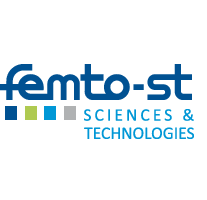RoboTop (ANR PRC project)
Project Identity
Acronyme: RoboTop
Project title: Microrobotics structural shaping, programming and control based on multi material Topology optimization: application to correlative microscopy for biology
Project abstract: RoboTop project aims to develop a methodological framework for the design and control of microrobots by establishing (i) a continuum between multi material design tools and micro-fabrication techniques, and (ii) hybrid methods for modeling and control. Building on advancements in computational design and AI methods, the project explores the potential of topology optimization and control to revolutionize microrobots, enabling unprecedented integration level of actuation, sensing and control directly in the material. The project will develop new abilities in multi-material topology optimization and hybrid methods, and exploit micro fabrication techniques that offer unprecedented possibilities to fabricate topologically optimized designs. The ambition here consists in taking advantage of active materials, with a particular emphasis on piezoelectric materials. Having multifunctional properties, they can be used for: (i) actuation with high dynamics and high displacement resolution and (ii) sensing of strain and stress. To demonstrate the usefulness of the project, we target one application area related to biological sample characterization using correlative microscopy. Specifically, the project aims to design a high speed monolithic XY piezoelectric sample holder and a touch probe with force sensing capability and modulated stiffness. These scientific units will enable precise manipulation and probing of biological specimens having a large range of mechanical properties.
Project consortium: RoboTop consortium brings together two partners having the complementary expertise and the interdisciplinary approaches : FEMTO-ST/AS2M/ROBIMSS on multi-material topology optimization algorithms and their numerical implementation, and ISIR/RPI-Bio on microrobotics, hybrid methods and correlative microscopy.

